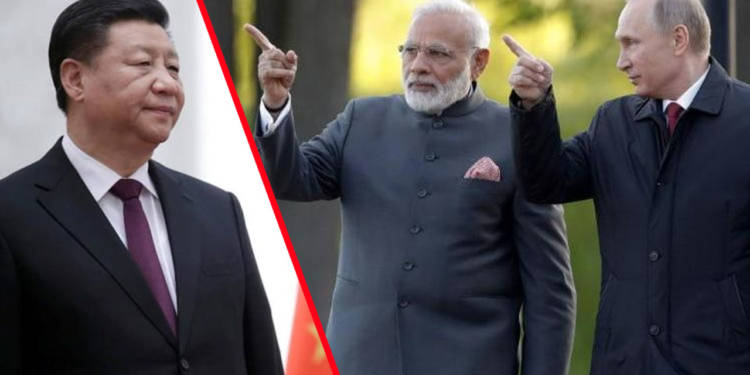Prime Minister Narendra Modi on Wednesday visited the city of Vladivostok in the far-east side of Russia as the Chief Guest for 5th Eastern Economic Forum. The two day visit is expected to further bolster ties between the perennial partners. Both the leaders have planned robust engagements between the two countries in the Russian far-east as well as in the Pacific and Arctic Oceans. In order to counter Chinese hegemony in the Far East, Russia has turned to India, opening up a plethora of opportunities for India. China has been well-known to coerce its way into foreign lands and then clamping down its authority there, Putin is wary of China’s expansionist nature and when the need has risen it has turned to India, its most trusted partner and PM Modi seems to have taken this challenge head on as India extends a $1 Billion line of credit for the development of the region.
The Far Eastern Federal District lies in the Asian part of Russia which is twice the size of India and is resource-rich with an abundance of petroleum, natural gas, rare earth metals and other hydrocarbons. India aims to employ its pool of cheap labour in Russian projects in fields of work like diamond processing, infrastructure and agriculture. The Far East region is less developed than the country’s European areas which include cities like Moscow and St. Petersburg. Russia aims to balance the Chinese presence in the sparsely populated far eastern region.
In what can be read as the beginning of a major shift in the geopolitical paradigm in Asia, Russia seeks India’s investment and assistance to counter Chinese presence in the sparsely populated and underdeveloped Russian far east. Apart from infrastructure development, Russia also wants Indian labour force in the region to counter the demographic change sparked by Chinese businesses in the region which has a population of only about 8 million. Russia has banned permanent land transfers to Chinese investors in the region and made employment of 80 percent of local people’s population compulsory for all upcoming Chinese projects. If India increases cooperation with Russia, it will reduce Moscow’s dependence on Beijing, in turn allowing India to contain the growing closeness between Russia and China. These trends can also further India’s ability to mediate between Russia and the West and to gain from any resulting balance.
The roadmap for this visit was prepared much earlier when the delegation which included Chief Ministers of 5 BJP governed states- Yogi Adityanath from Uttar Pradesh, Vijay Rupani from Gujarat, Devendra Fadnavis from Maharashtra, Pramod Sawant from Goa and Manohar Lal from Haryana, and a representative from Assam had visited the Far East in order to find major avenues for investment.
Climate change has been causing the Arctic ocean to open up for longer periods of the year, activating Russian ports for longer periods opening up opportunities for exploration. India is also looking at the viability of Chennai-Vladivostok sea route that would allow India access to Russia’s Far East in 24 days, compared to the 40 days taken by the current route via Suez Canal and Europe.
Apart from delivering job opportunities to the Indian workforce and harbouring profitable businesses that will not be competing with western players, The Russian Far East may open up doors for Indo-Russian engagement in the Pacific ocean. The two countries’ interests align on matters of Asia-Pacific security, and therefore, the very strong chances of such an engagement may very well give China sleepless nights.
Russia seeks to woo India as the two countries share a coveted amount of trust and respect for each other. For decades, India and Russia have never crossed paths and in the future too the two show no signs of it. The growth in trade relations and security/logistics-cooperation can only turn more and more fruitful between the two. If Russia wants to protect its interest in the long run, it must balance China by countering it with India’s help.































